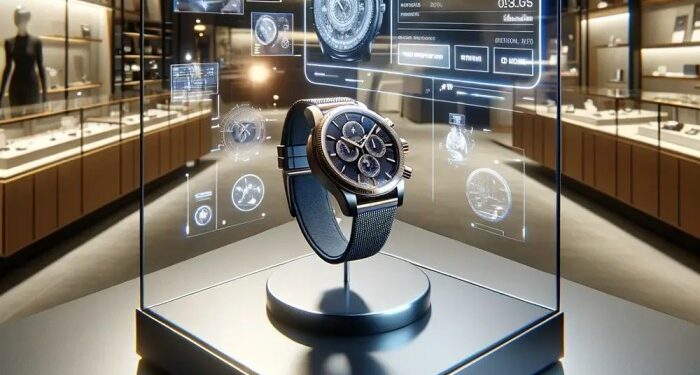Exploring the world of AR-Powered Product Displays for Better User Engagement, this article delves into the innovative technology that is revolutionizing user interactions with products. Dive in to discover the exciting possibilities that AR brings to the table.
Introduction to AR-Powered Product Displays

AR-powered product displays refer to the use of augmented reality technology to showcase products in a virtual environment, allowing users to interact with them in a more immersive way. This technology superimposes digital information, such as 3D models, animations, or product details, onto the real-world view through a device like a smartphone or tablet.
AR enhances user engagement by providing a more interactive and personalized shopping experience. Users can visualize products in their own space, try different variations, and make informed decisions before making a purchase. This technology bridges the gap between online and offline shopping, making the process more engaging and convenient for consumers.
Examples of Industries Benefiting from AR-Powered Product Displays
- Retail: Retailers use AR to allow customers to virtually try on clothing, accessories, or makeup before buying, enhancing the overall shopping experience.
- Real Estate: Real estate agents use AR to provide virtual tours of properties, giving potential buyers a realistic view of the space without physically visiting it.
- Automotive: Car manufacturers use AR to showcase different car models and features, allowing customers to explore the vehicles in detail before making a purchase decision.
Benefits of AR-Powered Product Displays
AR-powered product displays offer a range of benefits that enhance user engagement and overall customer experience. Let's delve into the advantages of incorporating augmented reality technology in product showcasing:
Increased Interactivity for Users
AR-powered product displays allow users to interact with virtual 3D models of products in real-time, enabling them to visualize items in their intended environment. This interactive experience enhances user engagement by providing a more immersive and personalized shopping experience.
Improved Customer Experience
By integrating AR technology, businesses can offer customers a more engaging and informative shopping experience. Customers can virtually try out products, view detailed specifications, and make more informed purchasing decisions. This level of interactivity and personalization leads to higher customer satisfaction and loyalty.
Boost Sales and Conversions
AR-powered product displays have been shown to increase sales and conversions significantly. By providing customers with a more engaging and interactive shopping experience, businesses can drive impulse purchases and reduce product returns. Additionally, the ability to visualize products in real-world settings can boost customer confidence and lead to higher conversion rates.
Implementing AR-Powered Product Displays
Implementing Augmented Reality (AR) technology into product displays can significantly enhance user engagement and provide a unique shopping experience. To successfully integrate AR-powered product displays, certain technology and strategies need to be in place.
Technology Required for AR Implementation
Implementing AR-powered product displays requires specific technology to bring virtual elements into the real world. The key technologies needed include:
- Smartphones or tablets with AR capabilities
- AR software development kits (SDKs) for creating AR content
- 3D modeling software for designing virtual product displays
- High-quality cameras for accurate AR tracking
- Internet connection for real-time updates and interactions
Steps to Create AR-Powered Product Displays
Creating AR-powered product displays involves the following steps:
- Define the objectives and goals of the AR experience.
- Design and develop 3D models of the products to be displayed.
- Integrate AR functionalities into the existing mobile application or create a standalone AR app.
- Test the AR experience for usability, functionality, and user experience.
- Launch the AR-powered product displays and gather user feedback for improvements.
Integrating AR into Existing Marketing Strategies
Integrating AR into existing marketing strategies can be a game-changer for brands looking to engage with their audience in new and exciting ways. Some strategies to integrate AR include:
- Offering AR-powered product demonstrations in physical stores or at events.
- Creating AR-enabled packaging or product labels for interactive experiences.
- Using AR in social media campaigns to drive user engagement and brand awareness.
- Collaborating with influencers to showcase products through AR experiences.
- Utilizing AR in email marketing campaigns to provide personalized and interactive content.
Enhancing User Engagement with AR
Personalizing AR Experiences for Users:Personalization is key to enhancing user engagement with AR-powered product displays. By collecting data on user preferences, behavior, and demographics, businesses can create personalized AR experiences that cater to individual needs and interests. This can include customized product recommendations, interactive features based on past interactions, and personalized messages or offers.Storytelling in AR-Powered Displays:Storytelling plays a crucial role in creating memorable and engaging AR experiences for users.
By incorporating narratives, characters, and plotlines into AR content, businesses can capture users' attention and immerse them in a compelling story. This not only enhances the overall user experience but also helps to communicate brand messages effectively.Creating Immersive and Interactive AR Content:To create immersive and interactive AR content, businesses should focus on providing users with a seamless and engaging experience.
This can be achieved through interactive elements such as 3D animations, gamification features, and real-time interactions. By allowing users to explore products from different angles, customize their experiences, and engage with the content in a meaningful way, businesses can increase user engagement and drive conversions.
Last Point
In conclusion, AR-Powered Product Displays offer a dynamic and engaging way to connect with users, providing a unique experience that blends technology with real-world applications. Embrace the future of product engagement with AR today.
General Inquiries
How does AR enhance user engagement?
AR enhances user engagement by providing interactive experiences that offer a more immersive and personalized interaction with products.
What industries benefit from AR-Powered Product Displays?
Various industries such as retail, real estate, and automotive benefit from AR-Powered Product Displays to showcase products in a more engaging and interactive manner.
What technology is required for implementing AR-Powered Product Displays?
Implementing AR-Powered Product Displays requires devices with AR capabilities, along with AR development tools and software.



